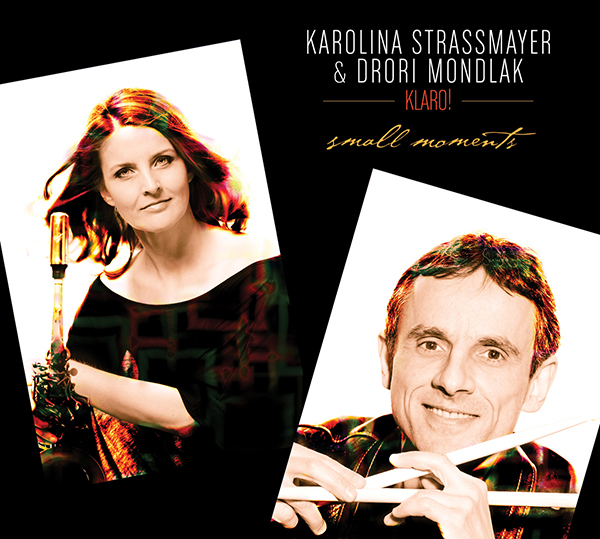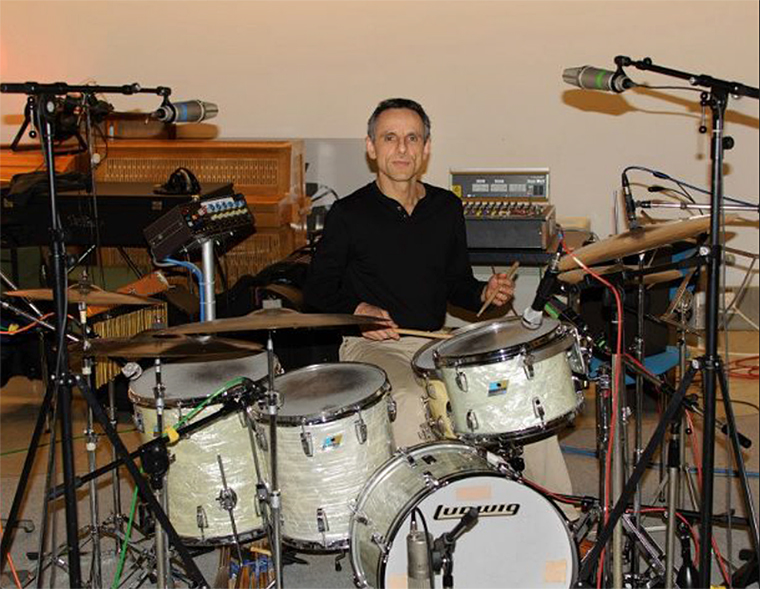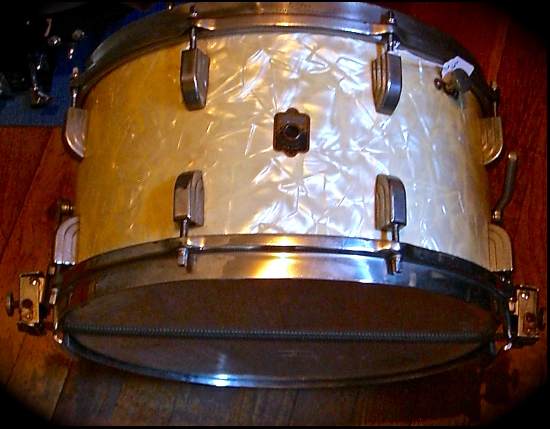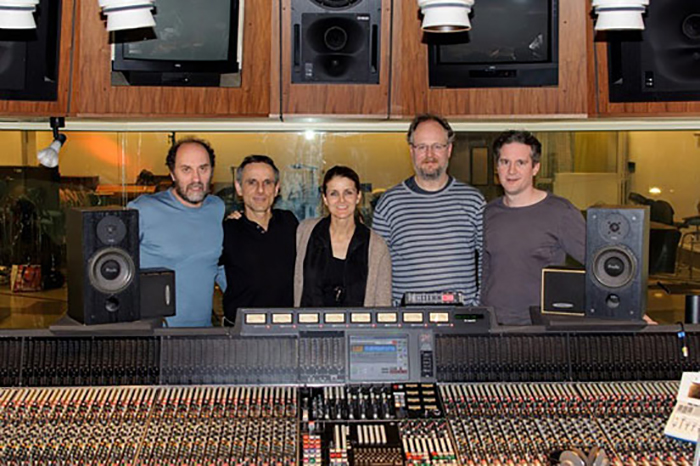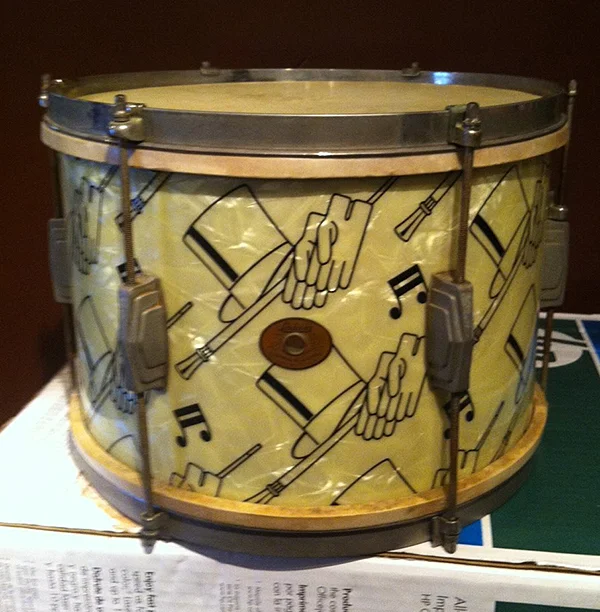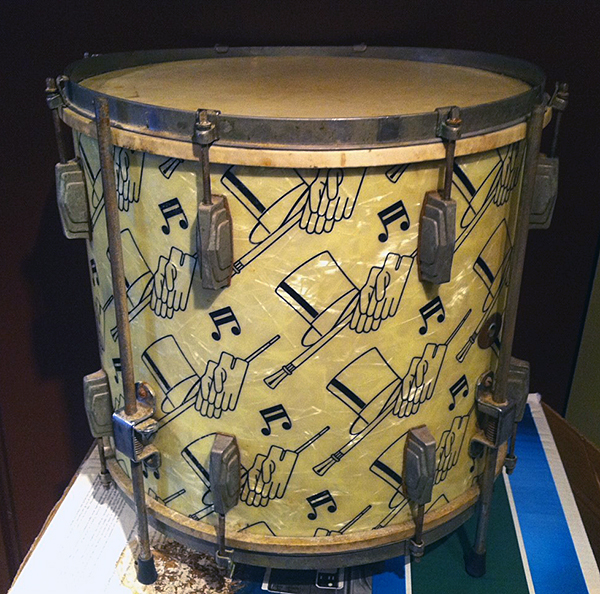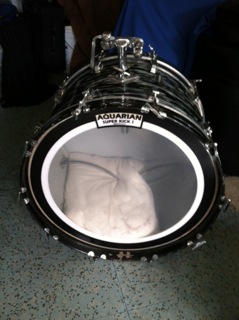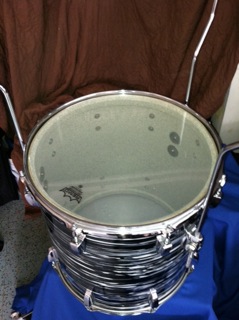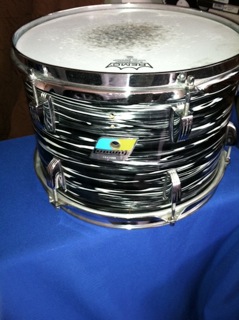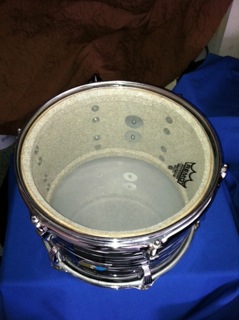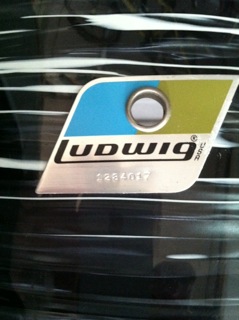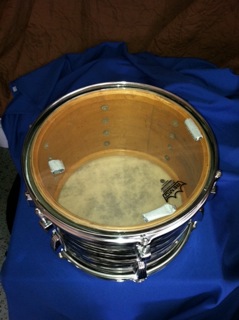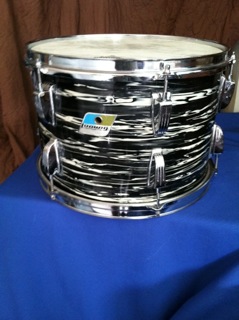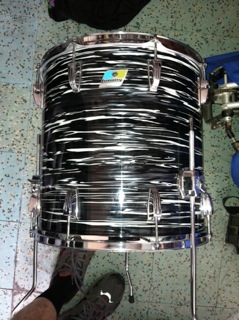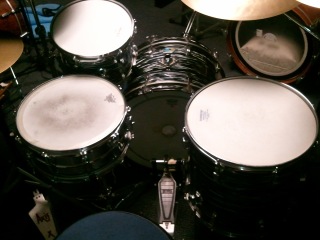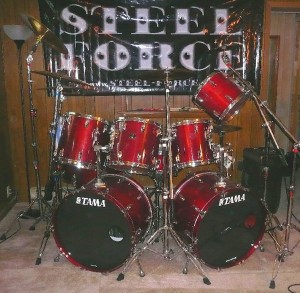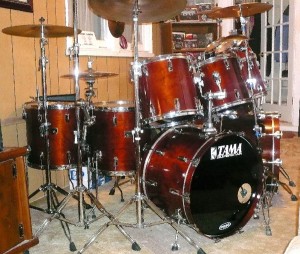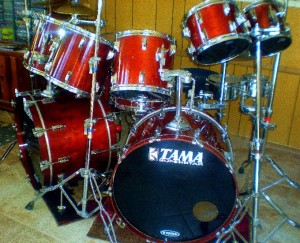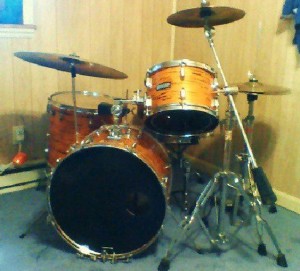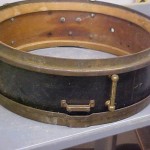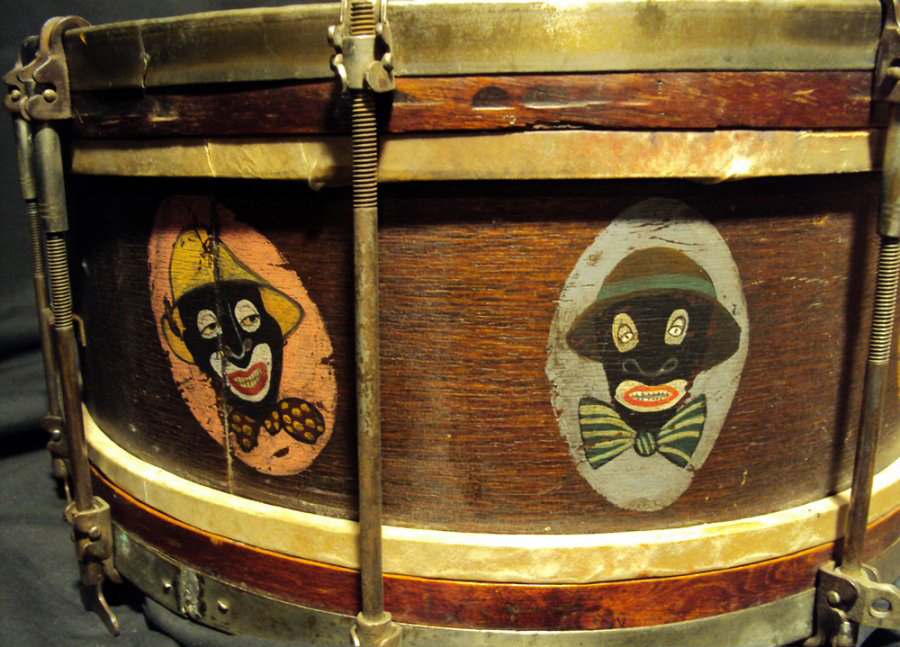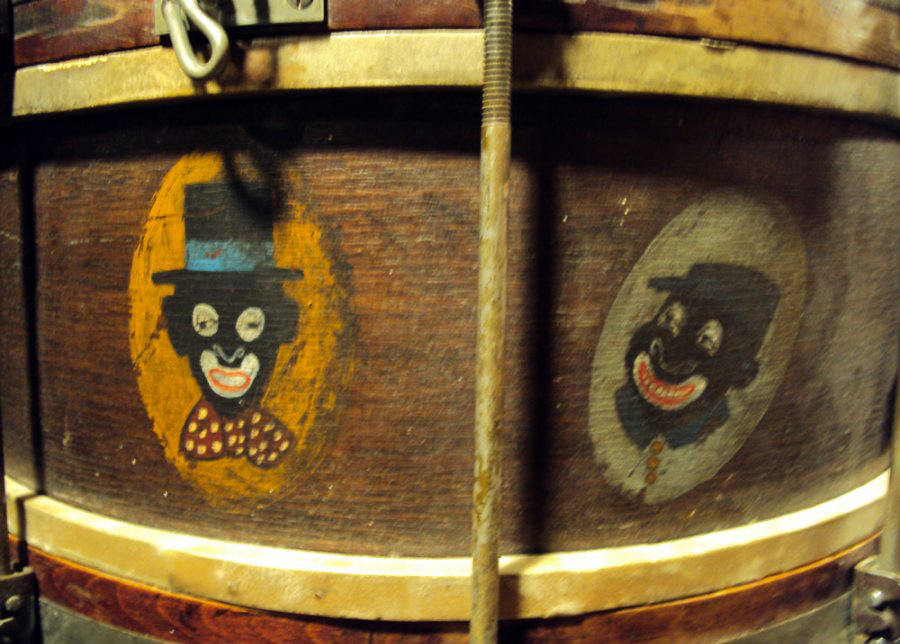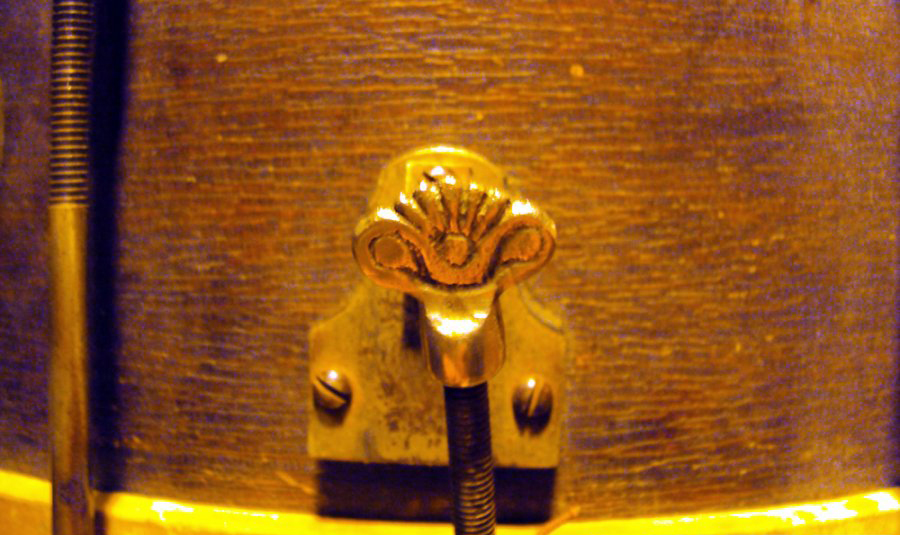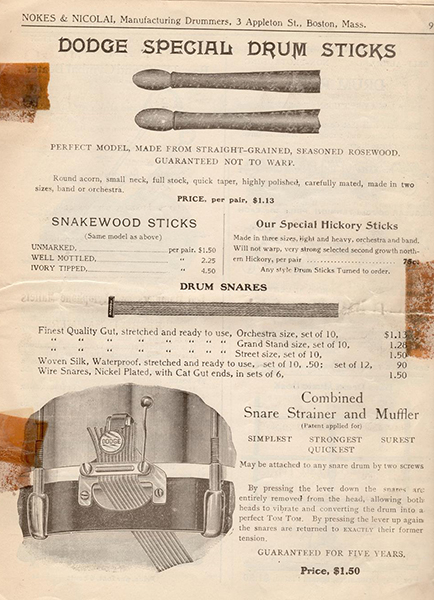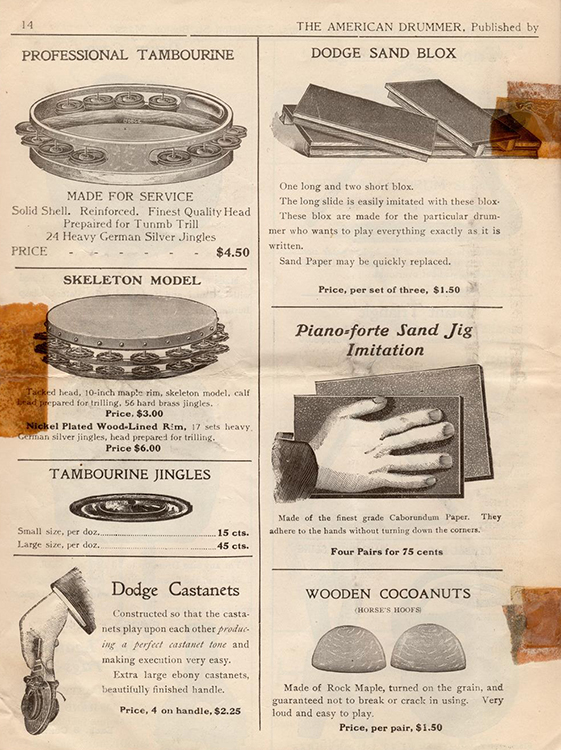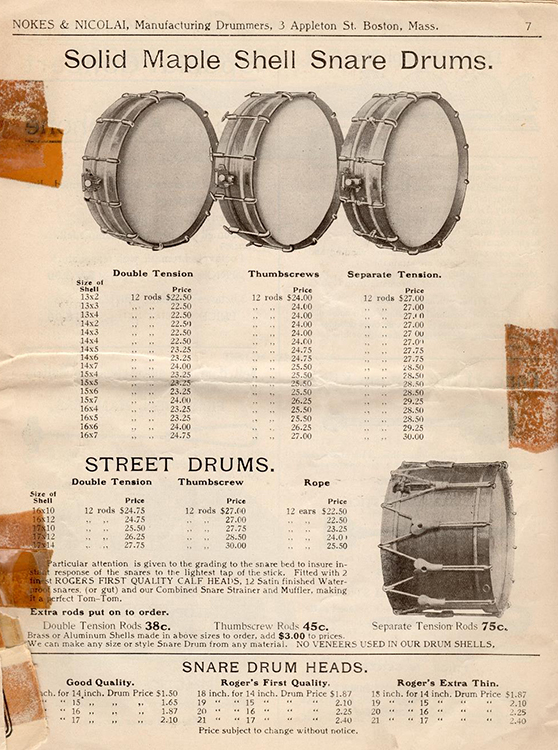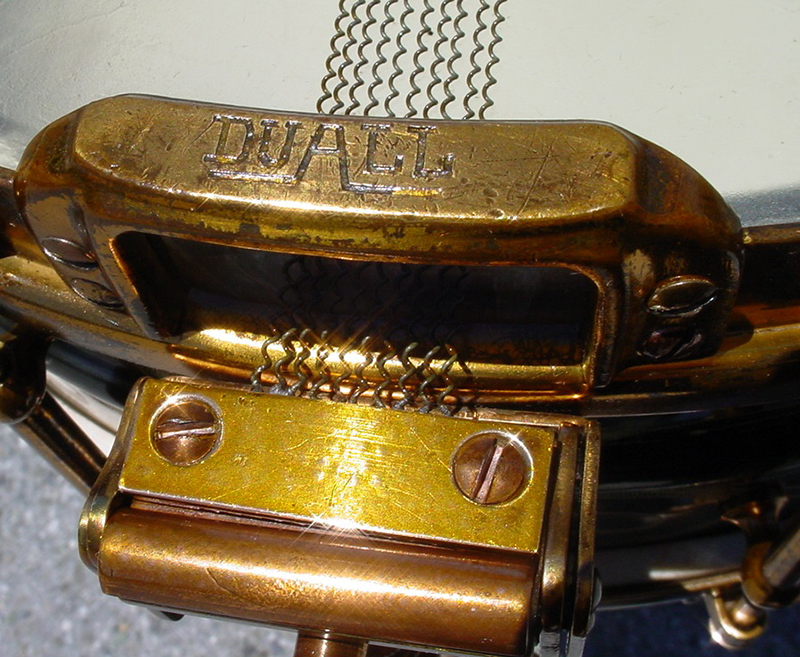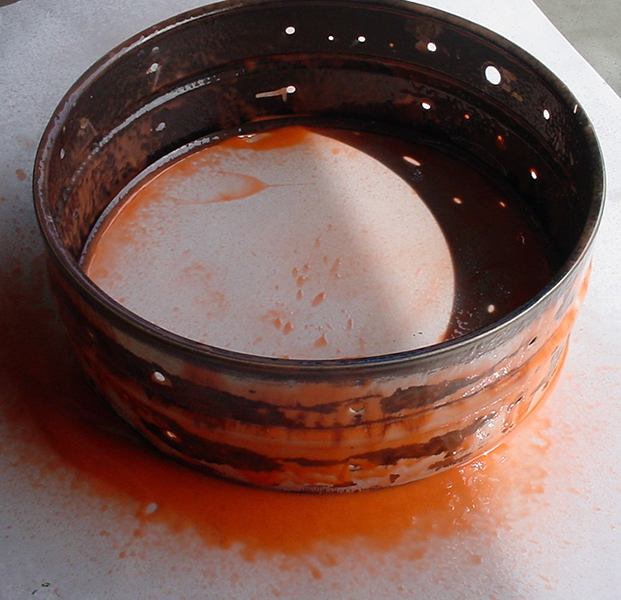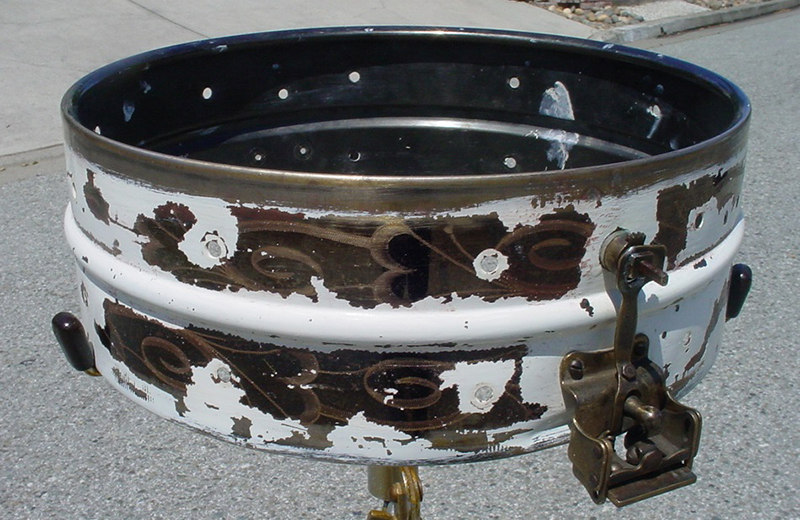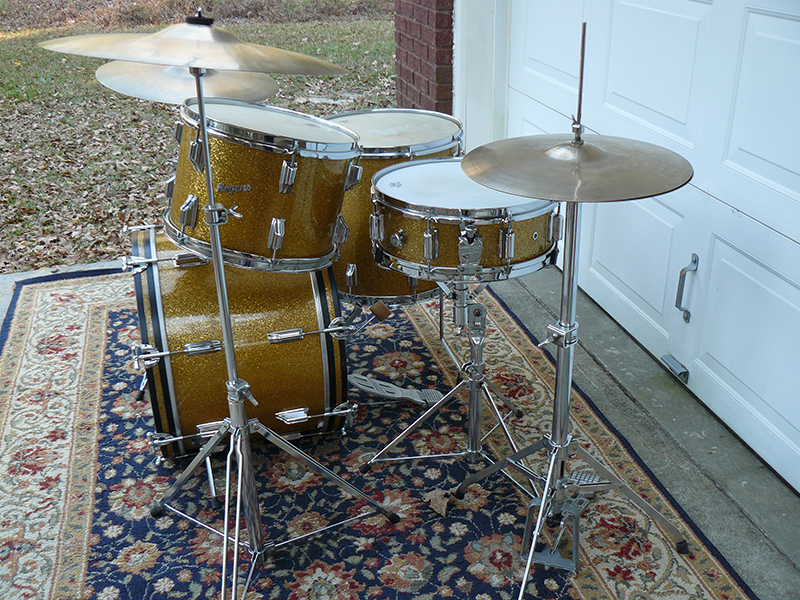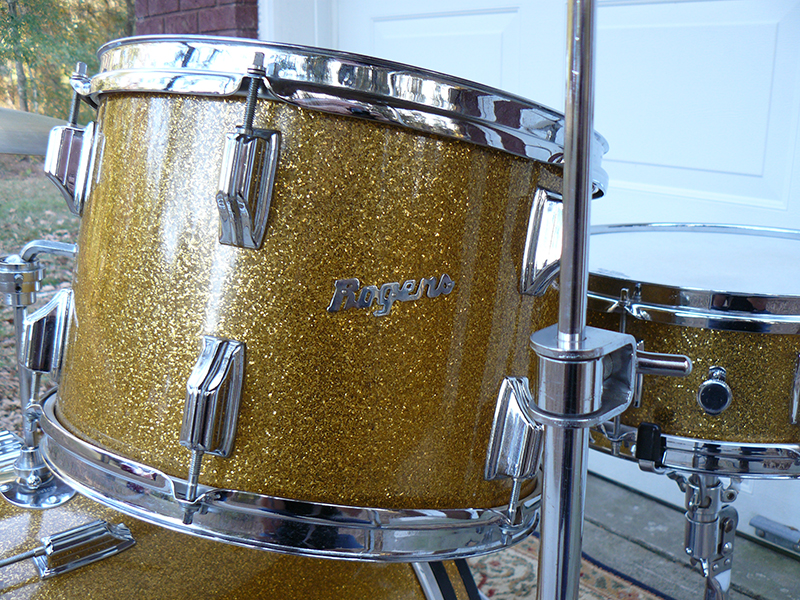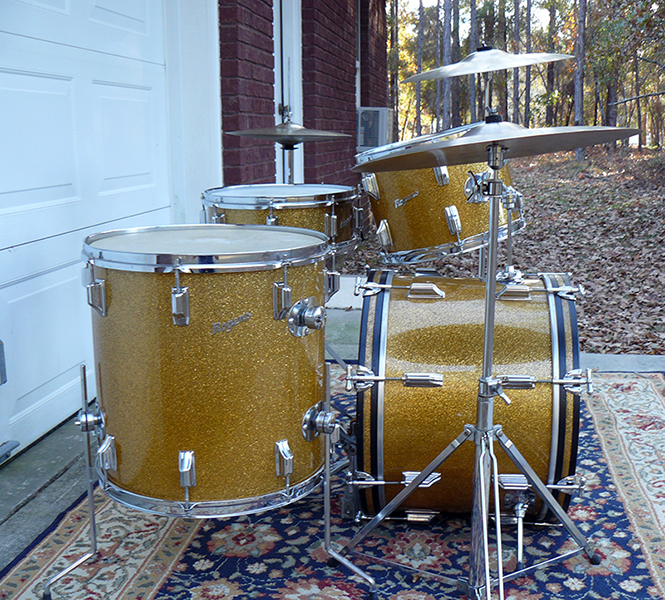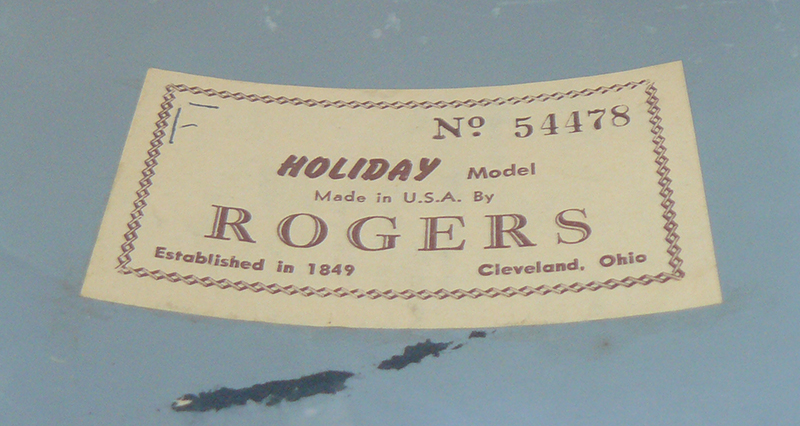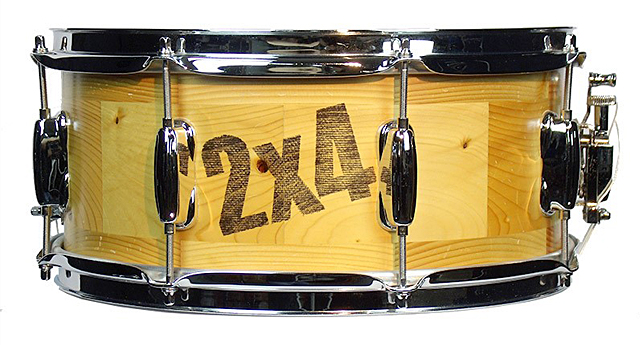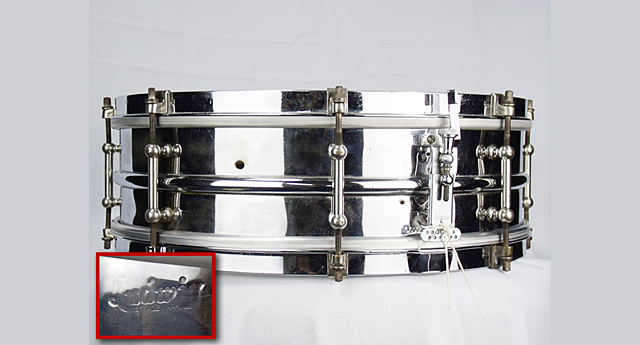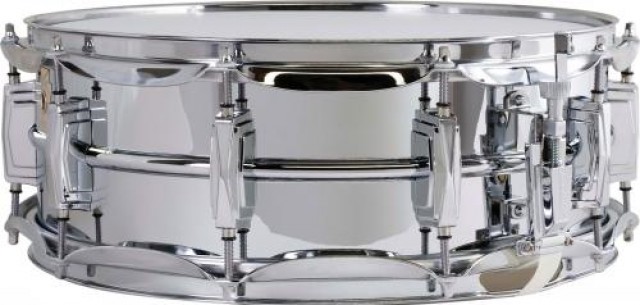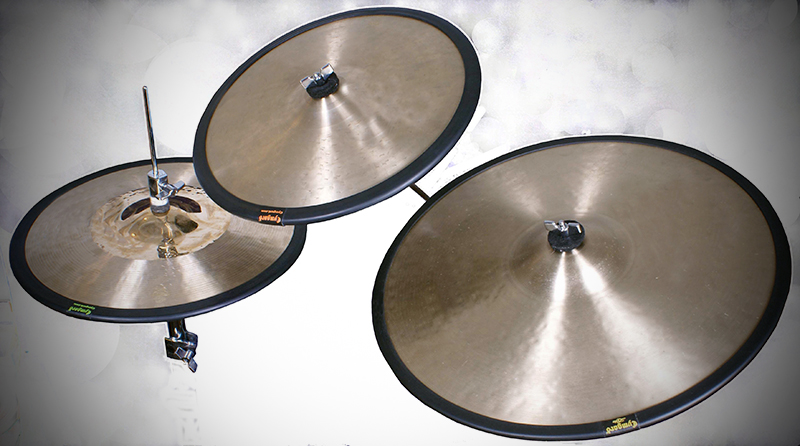Here's a "for sale" submission from Jack ‘JR’ Zdvorak:
Now here's a story for ya. What you're looking at is sometimes known as the 'Holy Grail' of drums, an original 1940-41 TOP HAT & CANE tom and floor tom. There may be less than five of these left on the planet, depending on who's telling the story. To my knowledge - again don't quote me on this - the only known complete sets in existence are owned by Charlie Watts of the Rolling Stones and Don Bennett up in Seattle, Washington. Here's two of the four out of this kit, and some very healthy pieces of drum real estate about to go up for sale or auction in mid January 2014.

I'd like to offer a special thanks to George Lawrence, owner-publisher of Not So Modern Drummer, and Gary Forkum, owner of Fork's Drum Closet, Nashville, TN. – Fork’s is the finest example of an all inclusive drum wonderland in the entire U.S. - and my new friend, Clay Fuqua, Nashville vintage specialist. Another guy who needs to be commended is James Grainger along with Steve and Joyce down at Custom Fretted Instruments and Repair in Sparta TN, just south of Nashville. Great team...fixes guitars for the best pickers in the country, reasonable, & very, very good at what they do,...a lost art.... & he's helping me bring many of mine back to life.
Upon meeting them the week before Christmas in Nashville 2013 I can clearly see why they are successful and why Nashville has become the new East Coast Hollywood - one of the top entertainment capitals of recording artists, musicians & vintage gear anywhere in the US. They are friendly here, knowledgeable, and they make you feel like a part of the family. That's what's cool about the south,...genuine and no BS. Being originally from the midwest, we've kind of heard it all from both coasts and simply live up to our motto, "Show Me". I needed their expert help and advice and got it. Thanks, because these drums have gone across the country with me looking for the right bed to lay their little sheepskin heads. Nashville won,...hands down.
Now I don't want to get ahead of myself, nor do I mean to sound pretentious, but I think it's nice to know where someone is coming from, when writing stories about one of the most famous drum sets to ever be built. Who's blowin’ smoke and who’s not.
Here's the story and, to the best of my knowledge and recollection, 'the truth'. It's a fascinating story. I may have to change a few names and initials to keep from getting too involved with any red tape, but this is the fable.
Here's a question for you: Do you remember when you were just a little guy and looked up to that local hero-musician guy ? Remember him? - The cool dude you wanted to be, the former player, the one who decided later in life to teach and pass along his vast knowledge to us young-uns to keep us from making too many bone head mistakes? Well that was my mentor, Mr. 'H' we'll call him, like Richard Dreyfus in the movie Mr. Holland’s Opus. He literally changed my life when I came to him for guitar lessons back when I was 10 years old. He was not only a National Guitar Champion back then, but ran a very successful teaching facility called 'American Music Studios'. Taught guitar, drums, banjo, mandolin, anything with a skin or a string on it, and had some of the best teachers you could find in the entire Mid West working with him. He studied with the world renowned 'Andre Segovia' in a master class back in 1960. He also carted us snotty nosed wanna bes from one AGMA National Music Competition to the next, from one end of the country to the other. Along the way we got to take in the Ludwig factory, the Gibson/Epiphone factory up in Kalamazoo, Michigan, and a ton of other landmarks on a bus with fifty other rug rats. Who does that anymore??? I still have the complete 60's set we drug to every competition, Gold Emblem Ludwigs, red sparkle, double bass, 4 toms, congas & Turkish Zildjians from the sixties. Those will never be sold. They went with us everywhere and are still as great a set today as they were back in the sixties. Fond memories - makes you appreciate quality in all aspects of life - just like musical equipment.

He was also an awesome drummer with top of the line Ludwigs all the way. Played center stage for good friend 'Willy-G' owner of Harley Davidson at their landmark '100th year HD Anniversary' in 2003 up at the Juneau Plant, in Milwaukee,Wisconsin. (Think PartYyyy!!!) Reminded you of Apollo Creed in his Red White & Blue get up in Rocky. Crazy, full of life, never married (no time for it), bigger than life. I just wanted to be around his enthusiasm because it was infectious, almost John Wayne like. He devoted his whole life to us kids and teaching us to be the best musicians we could be. Made you feel you could climb Mt Everest and you couldn't even spell it. You all know who I'm talking about.
These Top Hat & Canes were a gift from Mr. Ludwig himself to my buddy and mentor, Mr. 'H'. That's the story they told me and along with the pics of them together, I'm sticking with it. These 'Top Hats' are a part of that journey...that history...if they are passed down to you, you cherish them... and I did. Mr 'H' passed away a few years ago. I only got to see him two or three times after returning back to the Midwest from Vegas before he left us. I cried like a baby because there will never be another one like him. I vowed to try to keep it all going no matter what it cost. I sang at his funeral and there wasn't a dry eye in the place. I promised then and there to keep the legend and studio alive.

Remember when we actually made things of quality in this country? Quality instruments that said 'Made In USA'..and damn proud of it. These 'Top Hat & Canes' were one of the best examples of that era you'll ever find. Why? Because that's what Ludwig was and is to this day. These things feel like they were made to go to war and win it. It's because of the craftsmanship & pride they took in putting them together. The finish is unlike anything you'll ever see again, because they just don't have the time to make them that way anymore. The heads are made of calf skin & feel like a fine leather coat but have a distinct sound that just feels warm yet solid and comfortable. That's quality craftsmanship still leaking through from seventy four years ago. They had to stop making them because when WWII came along a few years later we needed our resources to make guns and bullets,...so the story goes...so less than ninety of them ever made. The floor tom was supported on a folding cradle. These, according to Clay down in Nashville, were added on by Ludwig as a possible proto type for things to come,...but used 4 of them for stability instead of the 3 legs we see today,...pretty ahead of their time.
Now you're probably wondering why would anybody in their right mind want to sell these? They are a part of our history and heritage. Some of the best drummers on the planet pounded out their lifetime fantasies on Ludwigs. I'm retired now and struggling to keep the legend alive. Somebody may help me with the purchase of this history. I'd be forever grateful. I run a small teaching & recording facility called Coyote Moon Productions with twenty to twenty five students from ages six to sixty where I teach guitar, piano, and vocals. This year I'll also start teaching acting at the 'Actor's Studio', hopefully at a new facility, financed by the sale of many of my prized vintage guitars & drums.

I feel I have been blessed. In my acting career I was lucky enough to have worked with some of the greats like JohnnyDepp, & Benicio Del Toro, Tom Cruise, and Dustin Hoffman in 'Rainman' (as kind of a stand-in stunt double),..not really much of an acting career, but hey I was in the game and in the top 1% of the industry for a few minutes. Most of the TV shows I was in were cancelled before the 5th episode...but I had fun...enjoyed playing music in Las Vegas whenever I could. As I look back on it all, it was mostly about the journey with me,...not the rewards. At my teaching studio, any stringed instrument or drum the kids can pick up, they have access to – to take it home, and play it to death. I can't take them with me and they sure aren't getting that in our current education system these days. I've got over a hundred guitars from 1918 Gibsons to Fender Pedal Steels to Sitars, mandolins, banjos & of course, some awesome drums I'll never let go of. Some of my kids are from under privileged families. Some were autistic and struggling, but the music is like a universal language to them. They get it and I'm glad to offer it to them. I do a charity event with Samick Guitars out of TN every year called 'Shades Of Blue, Autism Speaks'. It's not easy keeping this going. I seem to spend more on my kids than I make but, like my mentor Mr 'H', I'm paying it forward. No kid will ever go without a new guitar or drum at Christmas as long as I'm still kicking. If I sell these drums for the right price, I'll be able to build out my studio so we can have more room to actually have a band stage set up, a recording control room & some nice equipment. Tall order, but I'm keeping the faith. When you have kids from six to sixty it's a pretty good feeling watching them fly, sing their first song on stage, and get into college on a music scholarship. Every cent I make off of these things will go to their facility and keeping the music alive. They are dropping so many music programs where I live - it's a shame - this economy isn't fair to the 'young uns'...they deserve better. They deserve a shot like we had.
It's time for these Top Hats to find a new home, so if you want a piece of history, they are for sale. Make me an offer I can't refuse, or watch eBay. (unfortunately, that may be my best bet). If you need to authenticate anything on these bad boys, call Gary and Clay at Fork’s Drum Closet, or George down at Not So Modern Drummer. They are good guys, know their stuff, & I highly recommend them. Hope you enjoyed my story...I miss my friend Mr. 'H'. He changed my life, but he also left me some items to keep the legend alive. He would have liked this article and is probably smiling down at me right now while I'm writing this. 'Guitars & Drums'...like 'Words & Music'. I've got a lot to be thankful for and grateful to have even played in the game. Thanks again George for releasing this article. Great magazine...hope it brought some smiles to your face & a few fond memories.
(Editor’s note – I have seen and held these two drums that Jack is writing about. They are the real deal, are in good condition, and sound great. Jack is also the real deal – a very energetic, enthusiastic, and likable person. His motive for selling these drums that have so much sentimental value to him is admirable. The actual name of the finish on these drums is Top Hat according to the Ludwig catalog, but the name has kind of morphed over the years into Top Hat and Cane, a nickname of sorts that has become accepted by the vintage drum community as a pardonable mispronunciation. I still catch myself calling it Top Hat and Cane... I took the pictures below at Fork's Drum Closet. - George Lawrence)

